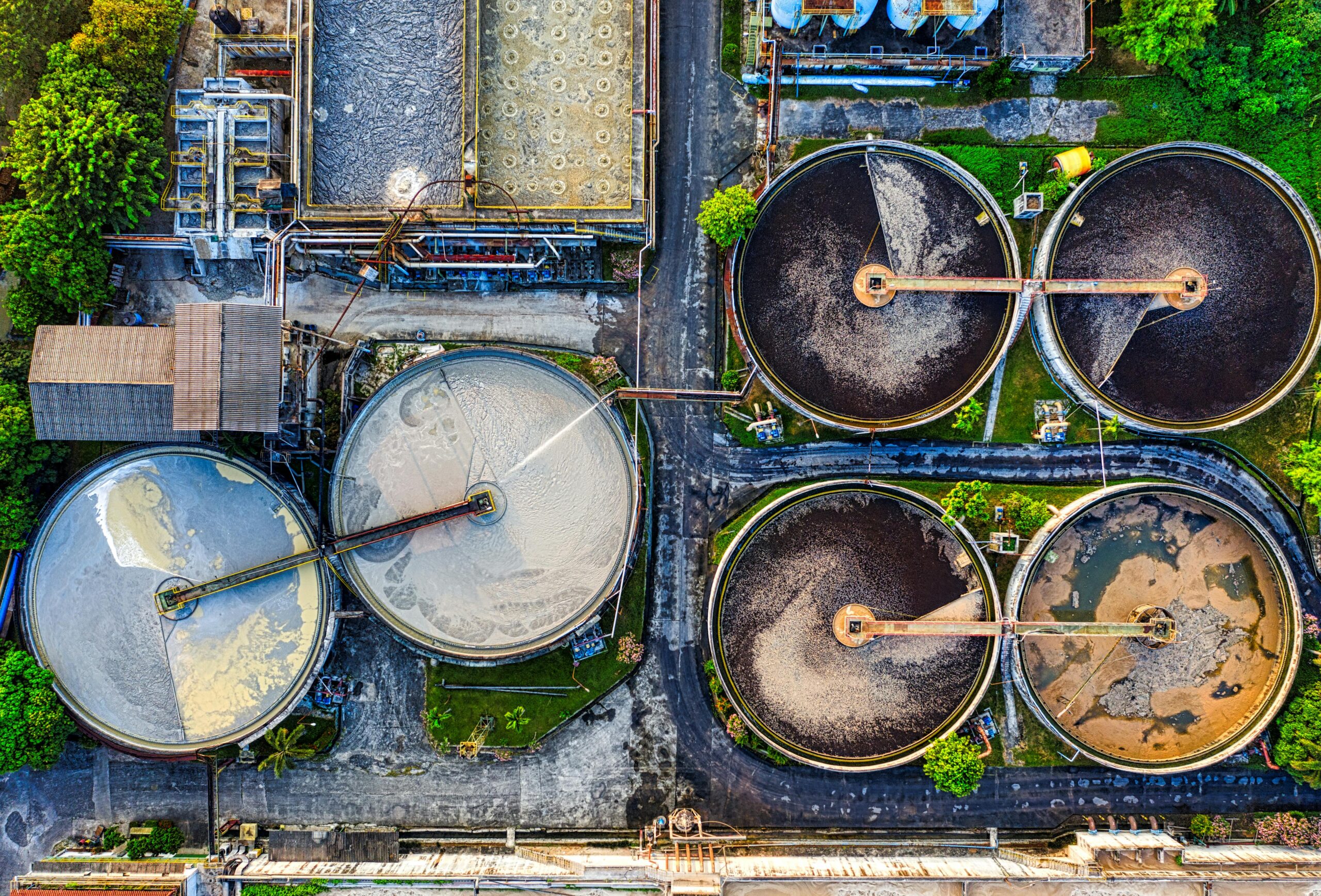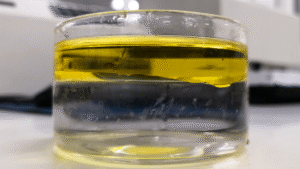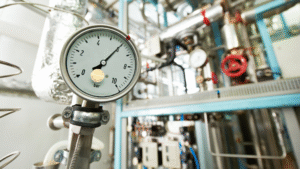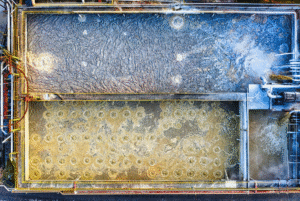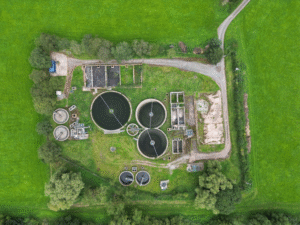Poor chemical treatment in industrial cooling towers can quickly burden a generally well-maintained
facility with maintenance costs and substantial hidden expenses. As a leading chemical blender built from the ground up in 1986, ETI collaborates closely with water treatment companies to deliver optimized chemical solutions that mitigate these potential costs.
Key Takeaways:
- Inadequate chemical treatment leads to significant hidden costs, including increased energy consumption due to scale buildup, expensive corrosion-related repairs, and potential legal liabilities and disinfections from microbial contamination like Legionella.
- Poorly managed cooling towers contribute to environmental damage, regulatory non-compliance, and steep penalties.
- ETI collaborates with water treatment companies to provide customized chemical solutions that reduce inefficiencies, lower energy costs, extend equipment lifespan, and improve compliance.
Why Chemical Blending is Challenging for Cooling Towers
Chemical blending for heating and cooling is distinct from general water treatment because it involves specialized chemistry expertise and precise formulation tailored specifically for each facility – tracking both water quality and metallurgy alike. Unlike simply adding generic chemicals, blending specialists such as ETI craft customized chemical solutions that optimize water quality, cooling system efficiency, and operational reliability for facilities across the country.
Facilities in sectors ranging from automotive manufacturing in Ohio, data centers in Pennsylvania, and hospitals in Connecticut require tailored chemical solutions that effectively address unique local challenges in scaling, corrosion, and microbial control.
Scale = Heat Transfer Efficiency Loss and Energy Cost Increase
Scale formation in cooling towers significantly diminishes heat exchange and transfer efficiency in a cooling system, causing energy consumption and operating costs to soar. Even a thin layer of scale—just 1/16-inch—can decrease energy efficiency significantly, compelling chillers to consume substantially more power. Studies show chillers with scaled heat exchanger tubes use 20–30% more energy than properly maintained systems, dramatically increasing electricity expenses.
Moreover, minor temperature increases in condenser water, such as a mere 2°F rise due to scaling, force chillers to expend an additional 2–6% energy to achieve necessary cooling performance. Over time, these seemingly small increments of inefficiency translate into significant financial losses, particularly for facilities where industrial operations and HVAC-intensive demand is high.
Corrosion = Leaks and Pipe Replacement/Repairs
Inadequate chemical treatment allows corrosion to aggressively attack cooling tower infrastructure, including pipes, heat exchangers, and tower basins. This corrosion manifests as leaks, pitting, rust formation, and in severe cases, catastrophic system failures like burst pipes or structural compromise. According to NACE, corrosion’s economic impact in the United States totals around $276 billion annually—approximately 3% of GDP—and cooling towers contribute to this number due to their constant exposure to corrosive conditions.
At the facility level, the expenses can be considerable. Smaller industrial cooling tower units can represent notable replacement costs, typically starting around $10,000, while mid-sized towers range from $50,000–$200,000. Additionally, refurbishments alone average about $50,000–$60,000. Skimping on corrosion inhibitors or neglecting proper water pH control might appear to offer short-term chemical savings, but this approach significantly raises the risk of expensive unplanned downtime, emergency repairs, or premature replacements.
Biofilm: Microbial Growth and Legionella Risks
Unchecked microbial growth in cooling towers—including algae, bacteria, and fungi—can quickly form biofilms. These layers that emerge as a slime-like substance not only compromise system cooling efficiency but also pose serious health hazards. Among the gravest threats is Legionella bacteria, notorious for thriving in warm, stagnant cooling waters and easily spreading through aerosolized droplets in a building’s HVAC system.
Health Risks and Legionnaires’ Disease
Legionella contamination can trigger outbreaks of Legionnaires’ disease, a severe pneumonia-type illness. Public health statistics underscore the rising threat: Legionnaires’ disease cases surged dramatically across the U.S., reaching record highs by 2018—more than an eight-fold increase from twenty years prior. High-risk facilities such as hospitals, hotels, and workplaces have notably suffered devastating outbreaks.
Legionnaires’ disease is exceptionally dangerous to at-risk populations. According to the Centers for Disease Control and World Health Organization, approximately 10% of legionnaire cases turn fatal. In healthcare environments with vulnerable populations, fatalities can soar to 25–30%.
Economic and Legal Consequences
A Legionella outbreak’s consequences extend far beyond health impacts. Direct medical costs can be staggering; a CDC study revealed that Legionnaires’ hospitalizations cost U.S. insurers approximately $144 million in a single year, averaging $38,000 per patient. But healthcare expenses are just the beginning.
Legal liability poses an immense financial risk for affected organizations. Facilities found negligent in Legionella prevention face lawsuits that frequently result in multimillion-dollar settlements. Jury awards have reached as high as $6 million per victim, and legal experts emphasize there’s virtually no ceiling on potential claims.
Beyond immediate financial liabilities, outbreaks severely damage business operations and reputations. Shutdowns for system disinfection, negative media coverage, and a loss of customer trust can have lasting economic impacts. A 2014 economic analysis estimated the broader national cost—including healthcare, lost productivity, and reduced quality of life—at approximately $835 million.
Regulatory and Public Health Risks = Compliance and Penalties
Due to these health and environmental risks, in some states cooling tower water treatment is heavily regulated. New York City, for instance, issues specific fines for cooling tower violations, including $1,000 for a first violation and $2,000 for repeat offenses if maintenance programs are inadequate. Non-compliance with state or local regulations further escalates contamination risks further, particularly if contaminants from corroded pipes exceed permitted levels.
Health and Safety Regulations
OSHA also holds employers accountable under the General Duty Clause to maintain safe workplaces free of Legionella hazards. Violations can lead to citations and fines, especially if negligence is proven. While OSHA doesn’t have a dedicated Legionella standard, ANSI/ASHRAE Standard 188 provides widely recognized guidelines for Legionella risk management. Compliance with ASHRAE 188, recommended by CDC and CMS, is essential, particularly for healthcare facilities where adherence is mandatory to maintain licensing and funding.
How ETI’s Chemical Programs Eliminate Hidden Cooling Tower Costs
Beyond legal penalties, poor water treatment drives up operational costs through excess water and energy consumption. Cooling towers operating at low cycles of peak efficiency due to poor water treatment design, scaling, or microbial growth consume and discharge far more water than necessary, placing strain on local water supplies and driving up utility costs. In water-sensitive regions of the US, this wastefulness can create both economic and ecological burdens.
At ETI, we don’t just sell chemicals—we collaborate with water treatment companies to create tailored solutions that eliminate inefficiencies, cut costs, and enhance cooling tower performance. As a blending partner, our proprietary chemistry and custom formulations are designed to support water treatment specialists in tackling hidden operational costs—issues like scale buildup, corrosion, microbial growth, and excessive water and energy consumption. Here’s how ETI helps our partners drive long-term energy savings and sustainability:
- Microbial Control & Legionella Prevention
- Smart Chemical Formulations That Replace Multiple Products and Drive Water Innovation
- Water & Energy Conservation Strategies
- Compliance & Risk Reduction
- Proven Results, Measurable Savings
Let’s Talk Savings
With ETI’s advanced chemical solutions, you’re not just maintaining cooling systems—you’re delivering optimized, cost-effective treatment programs to your clients. Let’s work together towards a more sustainable future of water!
Frequently Asked Questions (FAQs)
Why is scale buildup such a big issue in cooling towers?
Scale significantly reduces heat transfer efficiency, forcing chillers and pumps to work harder, which increases energy consumption and operating costs. Even a thin layer can elevate energy use significantly, leading to more energy bills and massive electricity expenses over time.
How does poor chemical treatment lead to corrosion?
Inadequate chemical control allows aggressive corrosion to damage cooling tower infrastructure, causing leaks, rust, and even catastrophic system failures. This leads to expensive repairs, unplanned downtime, equipment failures, and, in some cases, complete system replacement.
What are the risks of Legionella in cooling towers?
Legionella bacteria thrive in poorly maintained cooling systems and can cause Legionnaires’ disease, a severe respiratory illness with a high fatality rate. Outbreaks result in legal liabilities, regulatory fines, and reputational damage for facilities.
What environmental consequences stem from poor cooling tower treatment?
Ineffective treatment leads to contaminated blowdown, which can introduce harmful chemicals, heavy metals, and biocides into local water systems. This can result in EPA fines, costly compliance issues, and negative ecological impacts.
How does ETI help water treatment companies prevent these issues?
ETI provides tailored chemical formulations that optimize cooling tower performance, reduce energy and water waste, and enhance microbial control. Their solutions support compliance, sustainability, and cost savings proper water treatment, by replacing multiple conventional chemicals with a single, highly effective product. We partner with our water treatment companies to support their client facilities. Your success is our passion.

